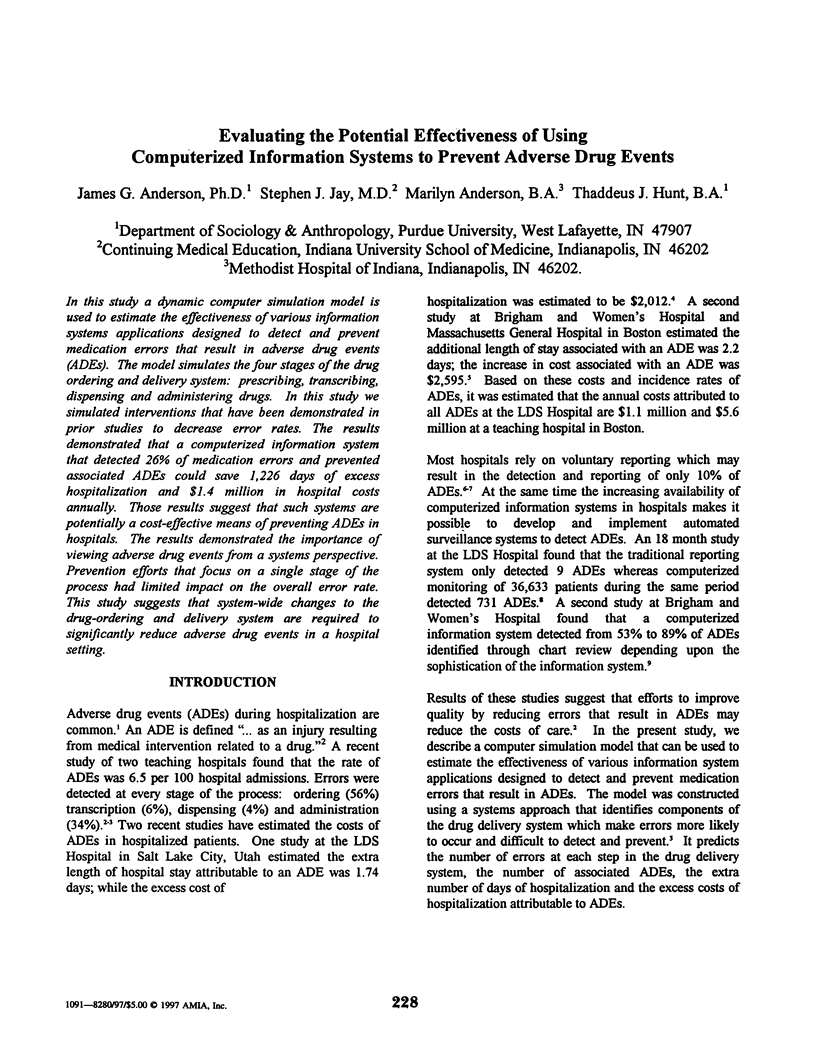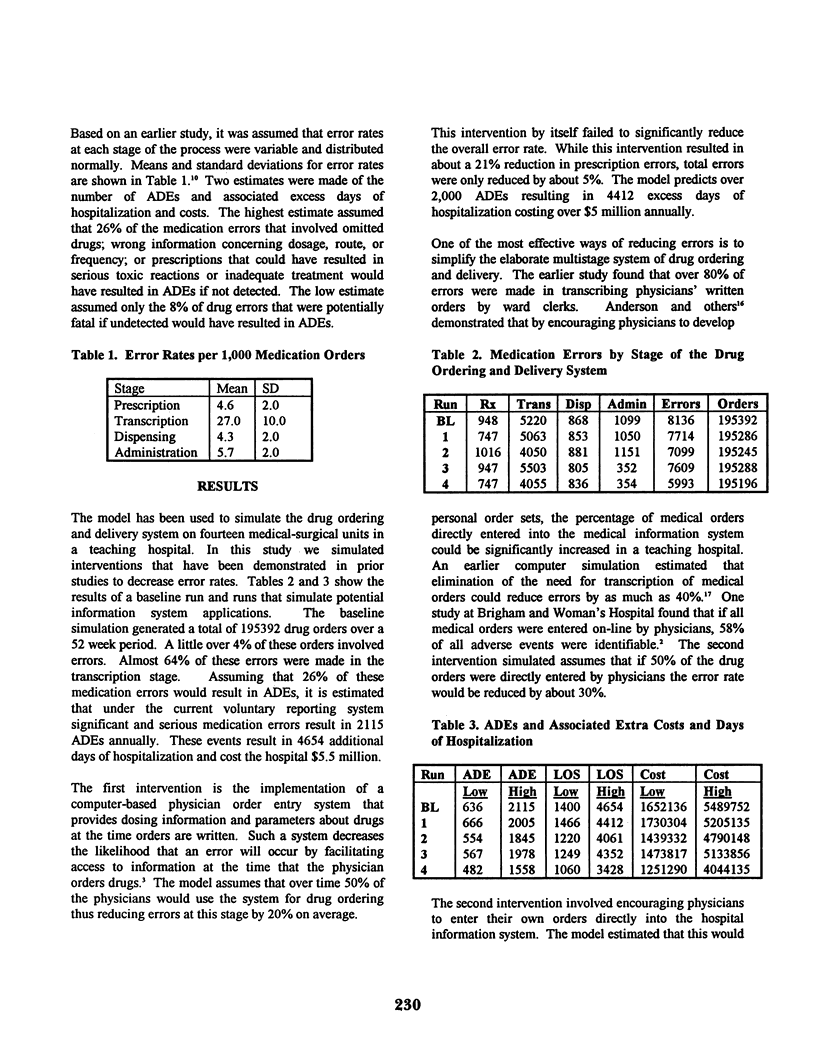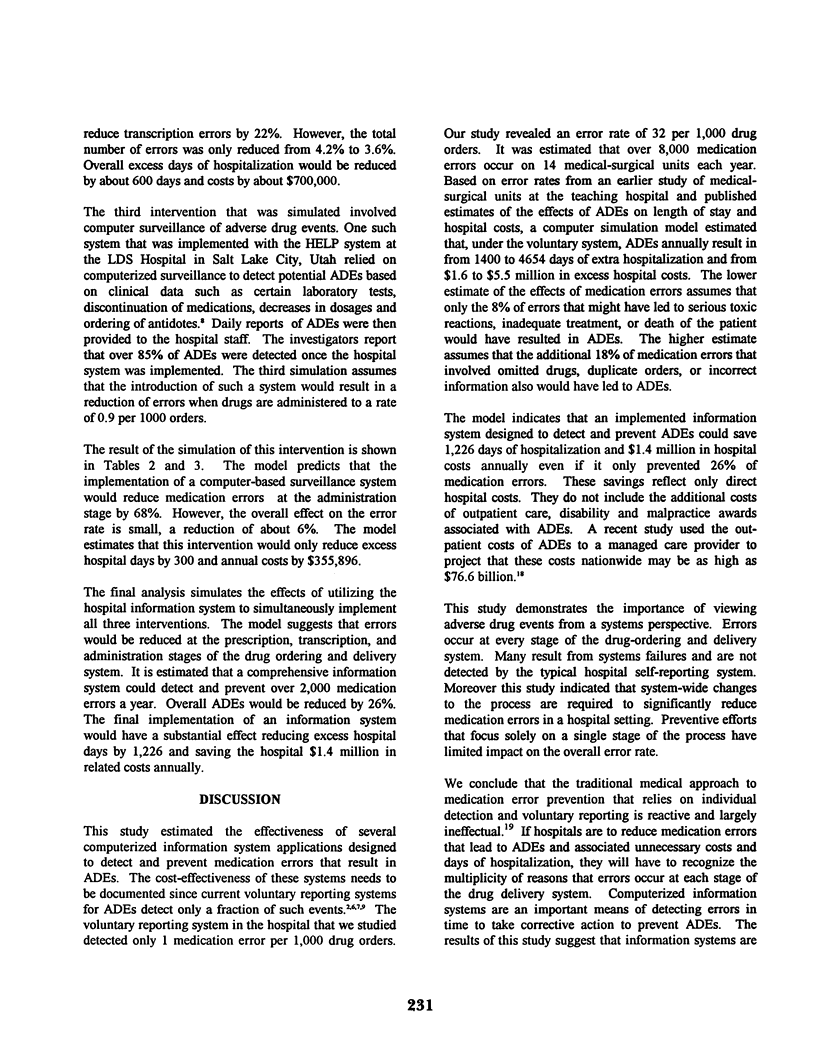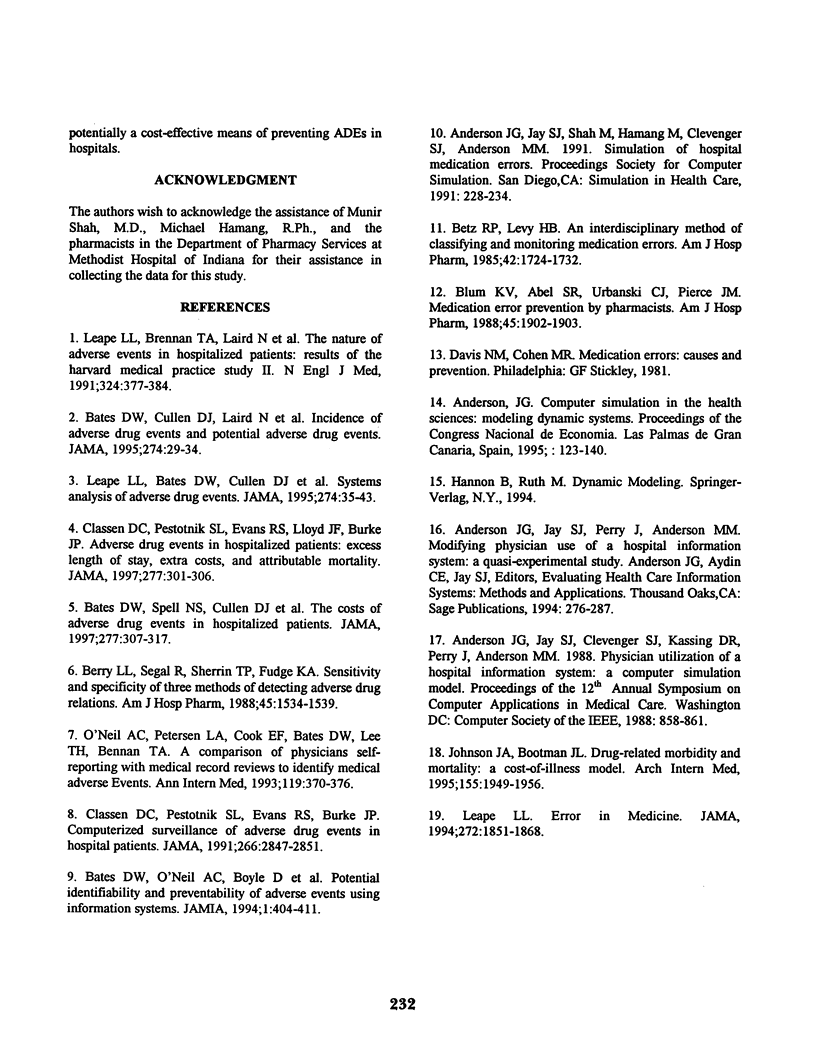Abstract
In this study a dynamic computer simulation model is used to estimate the effectiveness of various information systems applications designed to detect and prevent medication errors that result in adverse drug events (ADEs). The model simulates the four stages of the drug ordering and delivery system: prescribing, transcribing, dispensing and administering drugs. In this study we simulated interventions that have been demonstrated in prior studies to decrease error rates. The results demonstrated that a computerized information system that detected 26% of medication errors and prevented associated ADEs could save 1,226 days of excess hospitalization and $1.4 million in hospital costs annually. Those results suggest that such systems are potentially a cost-effective means of preventing ADEs in hospitals. The results demonstrated the importance of viewing adverse drug events from a systems perspective. Prevention efforts that focus on a single stage of the process had limited impact on the overall error rate. This study suggests that system-wide changes to the drug-ordering and delivery system are required to significantly reduce adverse drug events in a hospital setting.
Full text
PDF




Selected References
These references are in PubMed. This may not be the complete list of references from this article.
- Bates D. W., Cullen D. J., Laird N., Petersen L. A., Small S. D., Servi D., Laffel G., Sweitzer B. J., Shea B. F., Hallisey R. Incidence of adverse drug events and potential adverse drug events. Implications for prevention. ADE Prevention Study Group. JAMA. 1995 Jul 5;274(1):29–34. [PubMed] [Google Scholar]
- Bates D. W., O'Neil A. C., Boyle D., Teich J., Chertow G. M., Komaroff A. L., Brennan T. A. Potential identifiability and preventability of adverse events using information systems. J Am Med Inform Assoc. 1994 Sep-Oct;1(5):404–411. doi: 10.1136/jamia.1994.95153428. [DOI] [PMC free article] [PubMed] [Google Scholar]
- Bates D. W., Spell N., Cullen D. J., Burdick E., Laird N., Petersen L. A., Small S. D., Sweitzer B. J., Leape L. L. The costs of adverse drug events in hospitalized patients. Adverse Drug Events Prevention Study Group. JAMA. 1997 Jan 22;277(4):307–311. [PubMed] [Google Scholar]
- Berry L. L., Segal R., Sherrin T. P., Fudge K. A. Sensitivity and specificity of three methods of detecting adverse drug reactions. Am J Hosp Pharm. 1988 Jul;45(7):1534–1539. [PubMed] [Google Scholar]
- Betz R. P., Levy H. B. An interdisciplinary method of classifying and monitoring medication errors. Am J Hosp Pharm. 1985 Aug;42(8):1724–1732. [PubMed] [Google Scholar]
- Blum K. V., Abel S. R., Urbanski C. J., Pierce J. M. Medication error prevention by pharmacists. Am J Hosp Pharm. 1988 Sep;45(9):1902–1903. [PubMed] [Google Scholar]
- Classen D. C., Pestotnik S. L., Evans R. S., Burke J. P. Computerized surveillance of adverse drug events in hospital patients. JAMA. 1991 Nov 27;266(20):2847–2851. [PubMed] [Google Scholar]
- Classen D. C., Pestotnik S. L., Evans R. S., Lloyd J. F., Burke J. P. Adverse drug events in hospitalized patients. Excess length of stay, extra costs, and attributable mortality. JAMA. 1997 Jan 22;277(4):301–306. [PubMed] [Google Scholar]
- Johnson J. A., Bootman J. L. Drug-related morbidity and mortality. A cost-of-illness model. Arch Intern Med. 1995 Oct 9;155(18):1949–1956. [PubMed] [Google Scholar]
- Leape L. L., Bates D. W., Cullen D. J., Cooper J., Demonaco H. J., Gallivan T., Hallisey R., Ives J., Laird N., Laffel G. Systems analysis of adverse drug events. ADE Prevention Study Group. JAMA. 1995 Jul 5;274(1):35–43. [PubMed] [Google Scholar]
- Leape L. L., Brennan T. A., Laird N., Lawthers A. G., Localio A. R., Barnes B. A., Hebert L., Newhouse J. P., Weiler P. C., Hiatt H. The nature of adverse events in hospitalized patients. Results of the Harvard Medical Practice Study II. N Engl J Med. 1991 Feb 7;324(6):377–384. doi: 10.1056/NEJM199102073240605. [DOI] [PubMed] [Google Scholar]
- Leape L. L. Error in medicine. JAMA. 1994 Dec 21;272(23):1851–1857. [PubMed] [Google Scholar]
- O'Neil A. C., Petersen L. A., Cook E. F., Bates D. W., Lee T. H., Brennan T. A. Physician reporting compared with medical-record review to identify adverse medical events. Ann Intern Med. 1993 Sep 1;119(5):370–376. doi: 10.7326/0003-4819-119-5-199309010-00004. [DOI] [PubMed] [Google Scholar]


